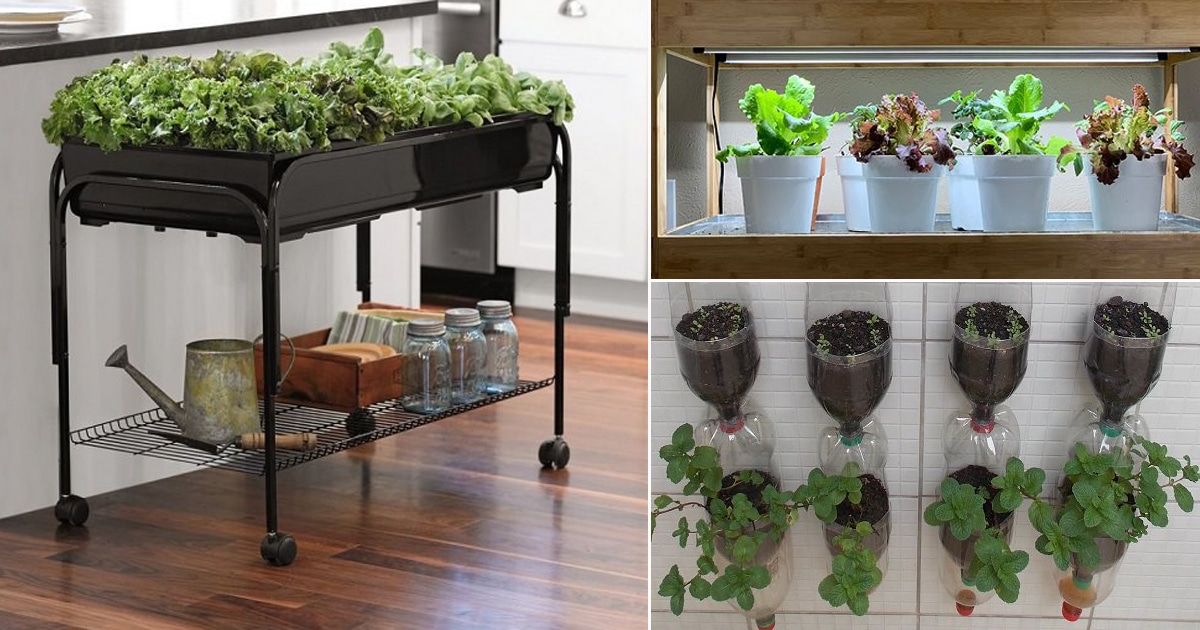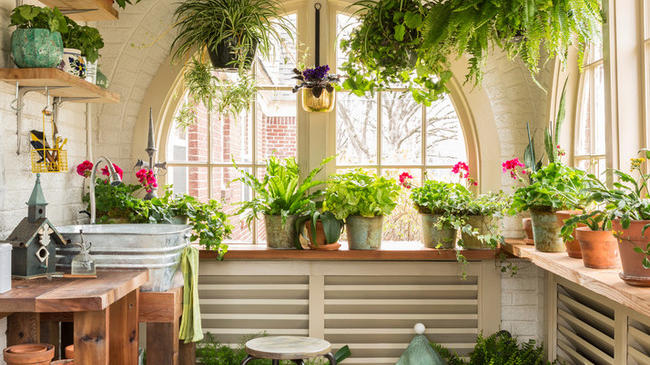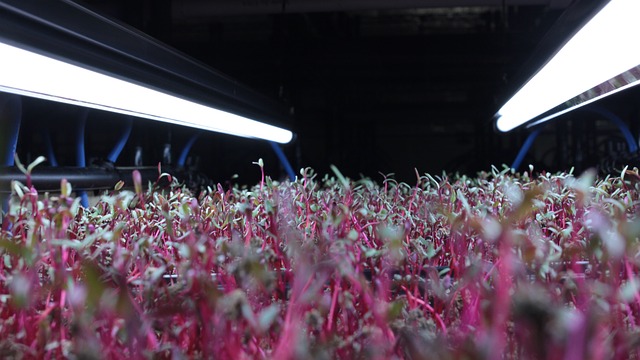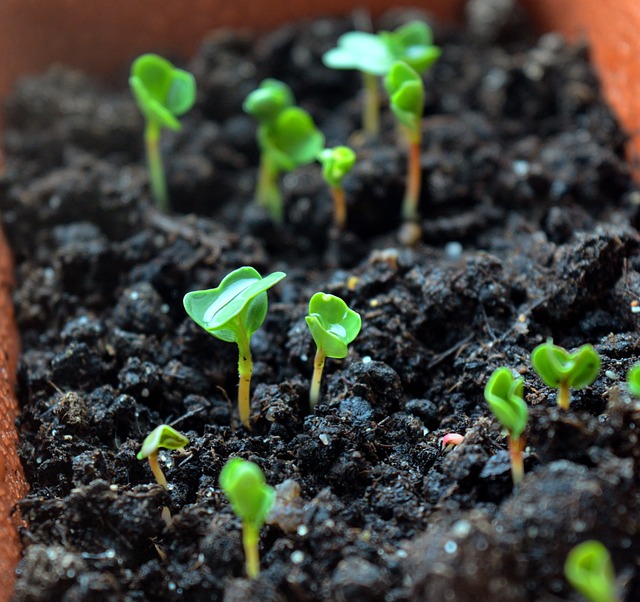
Indoor gardening has become increasingly popular as people seek to bring the beauty of nature into their homes. However, achieving success in this endeavor requires more than just a green thumb.
In this article, we will explore the seven secrets to achieving successful indoor gardening. From maximizing light and improving humidity to choosing the right plants and utilizing space efficiently, we will provide you with expert advice and tips to help you create a thriving indoor garden that flourishes in any environment.
Maximizing Light
To maximize light in your indoor garden, strategically position your plants near windows or invest in high-quality grow lights. Natural light is the ideal source for plants as it contains a full spectrum of wavelengths necessary for photosynthesis. Place your plants near south-facing windows to ensure they receive the maximum amount of sunlight throughout the day.
However, if you don't have access to sufficient natural light, artificial lighting can be a great alternative. High-quality grow lights, such as LED or fluorescent lights, provide the necessary intensity and spectrum for optimal plant growth. Position the lights close to the plants, ensuring they receive light for around 12-16 hours a day.
Remember to adjust the height and angle of the lights as your plants grow to maintain an appropriate distance. With the right lighting setup, your indoor garden will thrive.
Improving Humidity
Improving humidity is essential for successful indoor gardening.
Two common methods to increase humidity are using a misting system or a humidifier. Both options have their benefits and drawbacks, and the choice depends on the specific needs of the plants being grown.

Additionally, it is important to select plants that thrive in humid conditions to ensure their health and growth in an indoor environment.
Mist Vs. Humidifier
Using a humidifier or misting system can effectively improve the humidity levels in your indoor garden. Maintaining proper humidity is crucial for the health and growth of your plants.
Here are three key points to consider when deciding between a misting system and a humidifier:
- Humidity control: A humidifier provides consistent and controlled humidity levels, making it ideal for larger indoor gardens. On the other hand, a misting system offers localized humidity, allowing you to target specific plants or areas that require more moisture.
- Benefits of misting: Misting can help prevent pests and diseases by creating a more humid environment, which is less favorable for their growth. It also aids in the absorption of nutrients and promotes healthy foliage.
- Space and convenience: If you have limited space, a humidifier may be a better option as it can cover a larger area. However, misting systems are more portable and can be easily adjusted to meet the needs of different plants.
Ultimately, the choice between a misting system and a humidifier depends on the size of your indoor garden, specific plant requirements, and personal preferences.
Humidity-Loving Plants
A key aspect to consider when focusing on improving humidity in your indoor garden is the selection of humidity-loving plants. These plants thrive in environments with higher humidity levels, making them perfect choices for maintaining moisture in your indoor space.
Some popular humidity-loving plants include ferns, orchids, peace lilies, and spider plants. These plants have adapted to humid conditions in their natural habitats and can help increase the humidity levels in your indoor garden.
To maximize the benefits of these plants, it is important to provide them with adequate moisture through regular misting or placing a tray of water near their location. Additionally, grouping humidity-loving plants together can create a microclimate of increased moisture, benefiting both the plants and the overall humidity control in your indoor garden.

Choosing the Right Plants
Choosing the right plants for indoor gardening is crucial to ensure their growth and overall success. Plant compatibility is an important consideration, as certain plants have different light and humidity requirements.
Low-light tolerant options are ideal for spaces with limited natural light, while space-saving plant varieties are perfect for maximizing vertical space.
Plant Compatibility Tips
To ensure the success of your indoor garden, it is essential to select plants that are compatible with your specific growing conditions and requirements. Plant compatibility plays a crucial role in creating a harmonious and thriving indoor garden.
Here are three tips to help you choose the right plants for your indoor space:
- Consider light requirements: Different plants have varying light needs. Some thrive in bright, direct sunlight, while others prefer partial shade. Assess the natural light levels in your indoor space and choose plants accordingly. If you have limited natural light, opt for low-light tolerant plants like snake plants or pothos.
- Think about water requirements: Plants have different moisture needs. Some prefer dry conditions, while others thrive in more humid environments. Consider the humidity levels in your indoor space and select plants that can adapt to those conditions. For example, ferns and peace lilies thrive in higher humidity levels, while succulents prefer drier conditions.
- Explore companion planting: Certain plants benefit from being grown together, while others may hinder each other's growth. Research companion planting techniques to find plants that complement each other. For example, growing herbs like basil and thyme together can enhance their flavors and deter pests.
Low-Light Tolerant Options
Low-light tolerant plant options are essential for indoor gardening success in spaces with limited natural light. When choosing plants for low-light environments, it is important to consider their adaptability and ability to thrive with minimal sunlight.
Some low maintenance options include the snake plant, pothos, and ZZ plant. These plants are known for their ability to tolerate low light conditions and require little attention.
Additionally, incorporating artificial lighting solutions can greatly enhance the growth of low-light tolerant plants. LED grow lights are an excellent choice as they provide the necessary light spectrum for photosynthesis without generating excessive heat.

When selecting low-light tolerant plants, it is crucial to consider their specific light requirements and match them with the available lighting conditions to ensure optimal growth and health.
Space-Saving Plant Varieties
One efficient way to maximize space in indoor gardening is by selecting plant varieties that are compact and require minimal room. By choosing these space-saving options, you can create a lush and thriving indoor garden even in the smallest of spaces.
Here are three compact plant options that are perfect for vertical gardening techniques:
- Dwarf varieties: These plants have been bred to stay small, making them ideal for indoor gardening. Look for dwarf versions of popular plants such as tomatoes, peppers, and herbs.
- Hanging plants: Utilize vertical space by hanging plants from the ceiling or placing them on wall-mounted shelves. Options like pothos, ivy, and spider plants are not only compact but also beautiful trailing plants that can add visual interest to your indoor garden.
- Succulents and cacti: These desert plants are known for their ability to thrive in limited space and require minimal care. With their unique shapes and colors, succulents and cacti can be a striking addition to any indoor garden.
Utilizing Space
The effective utilization of available space is crucial for successful indoor gardening. One method to maximize space is through vertical gardening. This technique involves growing plants on walls or structures, allowing you to make use of height rather than just floor space.
Vertical gardening can be achieved using various methods such as trellises, wall-mounted containers, or hanging planters. Hanging planters are particularly useful as they can be suspended from the ceiling or mounted on walls, providing an innovative solution for limited space. They come in a variety of styles and materials, allowing you to add a touch of aesthetic appeal to your indoor garden while optimizing your available space.
Fertilizing Wisely
To ensure optimal growth and health of your indoor plants, it is essential to carefully consider the fertilizing regimen. Proper fertilization provides essential nutrients to plants, encouraging robust growth and vibrant foliage. Here are three key points to fertilize wisely:
- Use organic fertilizers: Organic fertilizers are derived from natural sources and are rich in nutrients. They release nutrients slowly, providing a steady supply to the plants over time. Additionally, organic fertilizers improve soil structure and fertility, promoting overall plant health.
- Opt for slow-release fertilizers: Slow-release fertilizers are designed to release nutrients gradually over an extended period. This ensures a consistent supply of nutrients to the plants, reducing the risk of nutrient deficiencies or excesses. Slow-release fertilizers are convenient, as they require less frequent applications.
- Follow manufacturer's instructions: Different plants have varying nutrient requirements. It is crucial to read and follow the manufacturer's instructions for the specific fertilizer you are using. Applying the right amount and at the correct frequency will help avoid over-fertilization, which can harm your plants.
Preventing Diseases
Implementing proper sanitation practices is crucial for preventing diseases in indoor plants.

Common plant diseases, such as powdery mildew, root rot, and leaf spot, can quickly spread if not addressed promptly.
To prevent these diseases, it is essential to keep indoor plants clean and free from debris. Regularly remove dead leaves, fallen flowers, and any other decaying matter that may harbor pathogens.
Additionally, avoid overwatering, as excessive moisture can create a favorable environment for fungal growth.
To further protect your indoor plants, consider using natural remedies for plant diseases. For example, neem oil can be an effective solution for controlling pests and fungal infections.
Implementing proper sanitation practices and utilizing natural remedies can help maintain healthy and disease-free indoor plants.
Encouraging Growth
A key factor in promoting growth in indoor plants is providing optimal conditions for their development. Here are three effective ways to stimulate growth and promote the healthy development of your indoor plants:
- Temperature control: Maintaining the right temperature is crucial for promoting development. Most indoor plants thrive in temperatures ranging from 60-75°F (15-24°C). Avoid exposing them to extreme heat or cold, as it can hinder growth.
- Proper watering: Watering your plants correctly is essential for stimulating growth. Overwatering can lead to root rot, while underwatering can cause stunted growth. Find a balance by checking the moisture level of the soil regularly and adjusting your watering schedule accordingly.
- Nutrient-rich soil: Providing your plants with nutrient-rich soil is vital for their growth. Choose a high-quality potting mix or add organic matter like compost to improve soil fertility. Additionally, consider using fertilizers specifically formulated for indoor plants to ensure they receive the necessary nutrients for healthy development.
Frequently Asked Questions
How Often Should I Water My Indoor Plants?
The watering frequency and techniques for indoor plants depend on various factors such as plant type, pot size, and environmental conditions. It is important to strike a balance between providing enough water for growth and avoiding overwatering, which can lead to root rot and other issues.

What Are Some Common Signs That Indicate My Plants Are Not Getting Enough Light?
Common signs of light deficiency in indoor plants include elongated stems, yellowing or pale leaves, and stunted growth. To increase light exposure, place plants near windows or use artificial grow lights with the appropriate intensity and duration.
Can I Use Artificial Light Sources for Indoor Gardening?
Yes, artificial light sources such as LED lights can be used for indoor gardening. While natural sunlight is beneficial, LED lights provide a reliable and efficient alternative for maximizing plant growth and ensuring healthy development.
How Do I Know if I Am Over-Fertilizing My Plants?
Over-fertilization symptoms can include yellowing leaves, stunted growth, and burned roots. To avoid this, carefully adjust fertilizer dosage based on plant needs, soil condition, and growth stage. Regularly monitor plants for signs of nutrient imbalance.
What Are Some Effective Natural Remedies for Preventing and Treating Common Plant Diseases in Indoor Gardens?
Natural remedies for common plant diseases in indoor gardens are effective alternatives to chemical treatments. By implementing preventive measures such as proper ventilation, maintaining optimal humidity levels, and using organic fungicides, plant diseases can be prevented and treated without the use of harmful chemicals.
 Business & FinanceHealth & MedicineTechnologyLifestyle & CultureScience & EnvironmentWorld NewsPrivacy PolicyTerms And Conditions
Business & FinanceHealth & MedicineTechnologyLifestyle & CultureScience & EnvironmentWorld NewsPrivacy PolicyTerms And Conditions
